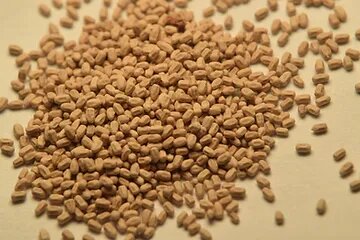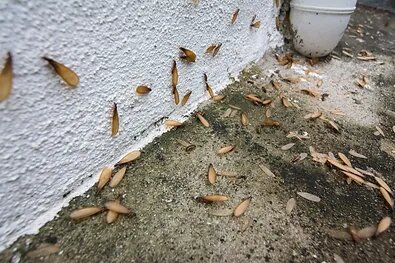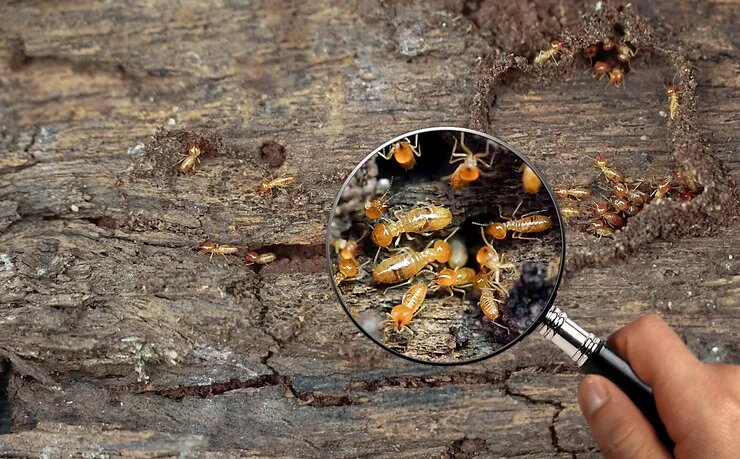California is home to all three types of termites, and they are a lingering pest issue in every region of the large state. The three types of termites found in California are Drywood, Subterranean, and Pacific Dampwood Termites. Though multiple species can thrive in any area given the correct circumstances you are most likely to find that each species is very particular about what it likes. The arid inland regions of Southern California are more prone to Drywood termites (hence the name) and the Subterranean and Pacific Dampwood termites are found in greater abundace near the coasts and the moist forests of the Northern California.
*Note: Though Drywood Termites thrive and love arid and warm climates, their lack of needing ground nests makes them well equipped travellers. They find their way into other regions by hitching a ride with lumber making its way to areas they would never be found naturally.
Since nearly all populated regions of California are prone to termite infestations, it’s important to be aware of the risk. Termites can have a devastating impact on your home, causing thousands of dollars in damage not to mention the cost to get rid of them. They are tiny and almost impossible to spot until they’ve done extensive damage. But with a little diligence, you can catch them before they sneak up and wreak havoc on your property.
The tips below will help you recognize the signs of termites or other pests so that you can take care of the problem before it gets out of hand.
Check for Termite droppings
One of the first signs of a termite infestation is a trail of small droppings throughout your home. These are the insects’ excrement, or frass, which they use to communicate with each other. Though “frass” is a term used to describe all insect extrement, the frass of termites typically is found in the form of tiny pellets that vary in color depending on the color of the wood, or cellulose containing food, that the termites are consuming. Depending on coloration, termite frass can be similar in appearance to coffe grounds or granules of sand.

If you spot small pellet shaped droppings on your wall, furniture, or window sills, it could be a sign of termites. Termites produce a lot of these droppings throughout their lifecycles, so if you spot them, it’s likely that you’ve got an infestation.
The more droppings you see, the more likely you are to have a serious problem. If you discover a trail of frass, don’t ignore it—it could be a sign that your house is already infested.
Watch for discoloration on your walls, floors, and furniture
We all know that Termites are tiny insects that have a voracious appetite for wood. Unless you live in a log cabin with much of your homes wooden structure uncovered and visible you most likely won’t be able to spot them in action. They don’t build nests or colonies out in plain sight like wasps or bees. Instead, they travel through your walls and floors and feed off the wooden portion of your homes structure.
This lack of a visible hive makes it difficult to know when you have an infestation until its too late. Though you should’nt lose hope, because there are some important signs, that if recognized early enough, can save you time and money.
Termites leave behind a trail of enzymes as they feast on the wood and cellulose containing materials in your home. These enzymes create a discoloration on the surfaces they touch. If you see faint stains or dark spots on your walls, floors, or furniture in rooms where termites are likely to travel, they might be to blame. If there is easy access to the areas behind or beneath these spots take a look, or maybe calling a professional is in order to visit that dank and spooky crawl-space or attic. Most good exterminators offer free consultations and inspections!
Keep an eye out for these discolored spots as Termites are constantly using this enzyme to break down materials to make it easier to eat them. You ignore these signs at your own risk.
Be on the lookout for swarming termites
Termites are pests that prefer to stay hidden. Though there are portions of the Termite lifecycle that will allow you to see them coming, the swarm! After a colony is established, the king and queen of that colony will begin to birth “swarmers”. These are the winged reproductive partners of a termites lifecycle that are migrating in search of a new home.
If you see swarming termites in your home, it’s a serious sign that you’ve got a problem. Because the insects are in the reproductive stages, the damage caused by a colony is already done. If you spot a swarm of termites, call in a professional immediately.

The insects are migrating, which means they’ve already done a lot of damage. An inspection of your home, and surrounding buildings is absolutely necessary to prevent any further damage.
Be aware of new construction
If you’re building a new structure or renovating your home, it’s important to be alert to potential termite damage. As mentioned at the beginning of the article, Drywood Termites travel with un-treated lumber great distances. Asking your contractor where the wood came from and if it has been inspected or treated for termites is a common and intelligent thing to do if you are building a home or renovating.
Another good idea when building/renovating is to check if your contractor is using all wood products, or if they’re making use of non-wood products as well. If they aren’t, you should talk to them about the risk of termite damage.
Many contractors use non-wood or termite repellant products that are highly resistant to termite infestations:
Concrete
It may be silly to mention, but it to clarify, termites cannot eat concrete. Termites feed on cellulose, and many building materials that you may not initially think of as termite food contain cellulose, like drywall. When building or renovating, keep in mind that concrete is a powerful tool in your termite control tool kit.
Cedar
Cedar is a genus of coniferous trees that grow naturally in the Mediterranean and parts of the western Himalayas. There are some non native cedar trees growing in the Americas as well, though none are common. Cedar is a very oil rich and resinous wood. Its within this resin that the Cedar gets its sweet somewhat spicy scent. The irony is that this attractive scent to us humans is what makes it inedible to termites. Though cedar can be an expensive building material, it is well worth the expense when it comes to repelling termites.
Pressure Treated Wood
The key to this type of woods termite repellant properties is in the name. Often used to build moisture resistant fences or landscape retaining walls, the lumber is “treated” with chemical preservatives that keep the wood from rotting, and as an added benefit is repulsive to termites. Pressure treated wood is an excellent building material if you or your neighbors live in an area that is known for having termites, or if you’ve experienced an infestation in the past.
PRO-TIP: Though it may be expensive as a building material, cedar chips are an excellent option for termite proof landscaping. While other types of mulch will draw attention from termites, cedar will create an unattractive boundary to help keep termites from discovering the possible delicious food sources that make up your homes foundation and structure.
Don’t ignore a bad smell
If you’ve got a termite problem, you’ll likely notice a bad smell in your home. Termites emit an odor as a defense mechanism, which is called a pheromone. If you smell a musty or earthy smell in your house, it could be termite pheromones. Be sure to check for discoloration around your home as well. If you’ve got a bad smell, it could be a sign that your house is already riddled with termites. If you notice a bad smell in your house, be sure to check for discoloration and marks on your walls. If you’ve got both, it’s likely that you’ve got termites. They’re often hard to spot, but the smell is a dead giveaway.
Termites are tiny insects that feed off wood and are nearly impossible to spot until they’ve done extensive damage. If you live in an area that’s prone to termite infestations, you need to be aware of the signs so you can get to them before they do damage. There are a few things to look out for, such as small black droppings, discoloration, and a bad smell.
Having a termite issue?
Can’t be sure if any of the signs of infestation mentioned above are occuring in your home?



